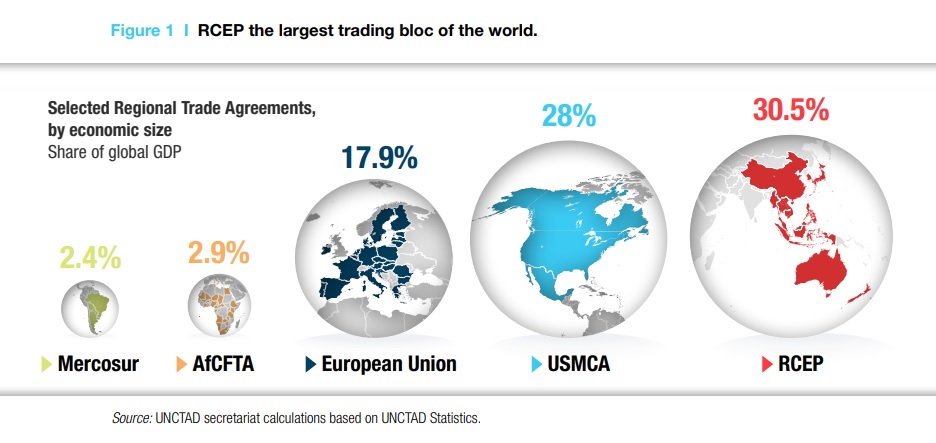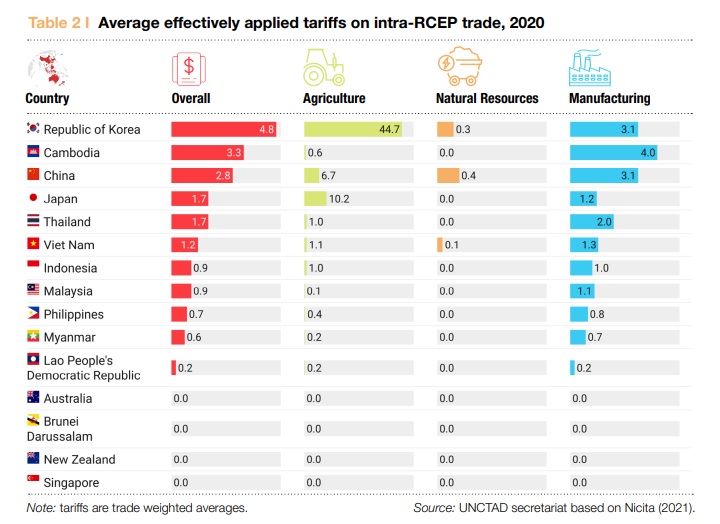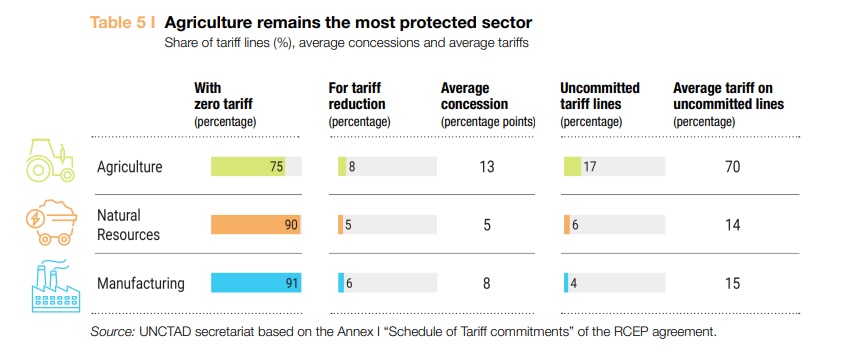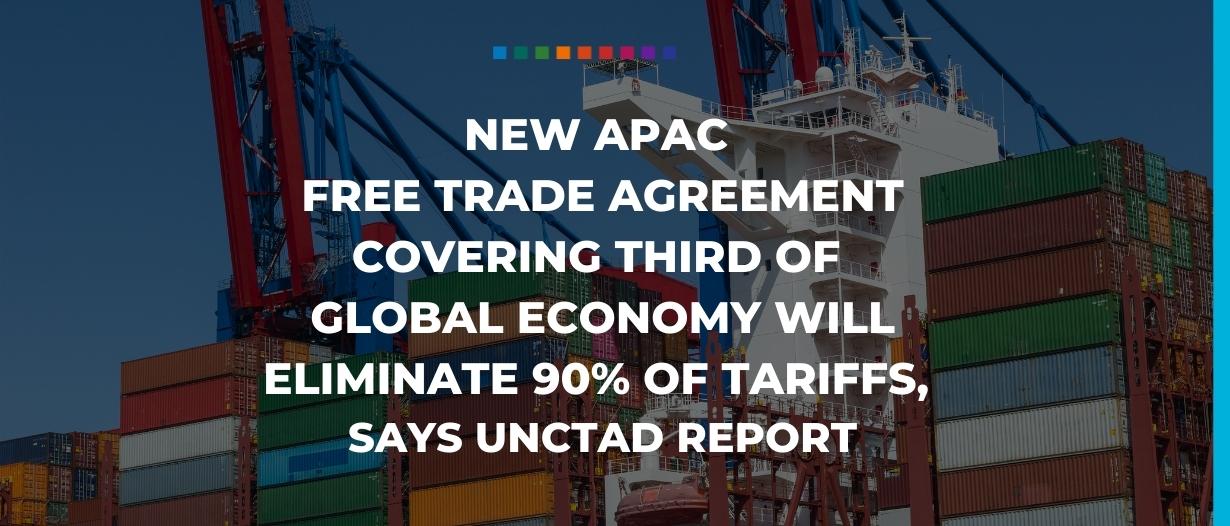A new Asia-Pacific free trade agreement covering a third of the global economy will eliminate 90% of tariffs in the region, according to a new report.
A United Nations Conference Trade and Development (UNCTAD) report, published yesterday, said the agreement was also tipped to increase intra-regional exports by $42 billion among the 15 signatories.
The Regional Comprehensive Economic Partnership (RCEP), as the agreement is officially known, will come into force on 1 January 2022, and will create the world’s largest trading bloc by combined GDP, according to UNCTAD.
The 15 signatories to the RCEP are Australia, Brunei Darussalam, Cambodia, China, Indonesia, Japan, the Republic of Korea, Laos, Malaysia, Myanmar, New Zealand, the Philippines, Singapore, Thailand, and Vietnam.
By comparison, other major regional trade agreements by share of global GDP are the South American trade bloc Mercosur (2.4%), Africa’s continental free trade area (2.9%), the European Union (17.9%) and the United States-Mexico-Canada agreement (28%).

A new “centre of gravity” for global trade
The centrepiece of the RCEP is the tariff concessions section, which UNCTAD believes will eliminate 90% of tariffs within the bloc.
Under the RCEP framework, trade liberalisation will be achieved through gradual tariff reductions.
Many tariffs will be abolished immediately, while others will be reduced gradually during a 20-year period.

The tariffs that remain in force will be mainly limited to specific products in strategic sectors, such as agriculture and the automotive industry, in which many of the RCEP members have opted out from trade liberalisation commitments.
Fuel for intra-regional exports
UNCTAD’s research shows that, in 2019, trade between the bloc’s 15 economies was worth about $2.3 trillion.
However, with the agreement on tariff concessions, UNCTAD believes this could boost exports within the bloc by 2%, or approximately $42 billion.
About 60% of the gains are expected to come from trade diversion – as lower tariffs within the RCEP would redirect trade valued at nearly $25 billion away from non-members to members.
And about 40% of the gains are expected to come from trade creation – as lower tariffs would stimulate trade between members by nearly $17 billion.
Uneven benefits among members
In a word of warning, UNCTAD cautioned that RCEP members are not expected to benefit uniformly from the agreement.
Tariff concessions are expected to produce higher trade effects for the largest economies of the bloc, not because of negotiations asymmetries, but largely due to the already low tariffs between many of the other RCEP members.
For example, UNCTAD’s analysis shows Japan would benefit the most from RCEP tariff concessions, largely because of trade diversion effects.
UNCTAD sees Japan’s exports rising by about $20 billion under the RCEP, an increase equivalent to about 5.5% relative to its exports to RCEP members in 2019.
The report also finds substantial positive effects for the exports of most other economies, including Australia, China, the Republic of Korea, and New Zealand.
On the other hand, calculations show that RCEP tariff concessions may end up lowering exports for Cambodia, Indonesia, the Philippines, and Vietnam.

This would stem primarily from negative trade diversion effects, the report says, as some exports of these economies are expected to be diverted to the advantage of other RCEP members, due to differences in the magnitude of tariff concessions.
For example, some imports of China from Vietnam will be replaced by imports from Japan due to stronger tariff liberalisation between China and Japan.
Better to be in than out
Nonetheless, the report concludes that it’s “better to be in than out”, even for those countries that may suffer from trade diversion effects.
As UNCTAD points out, if an economy suffers some degree of trade diversion under the RCEP, it does not necessarily mean that that economy would have been better off outside of the RCEP, as the trade diversion effects may have taken place anyway as RCEP members integrate more closely within the bloc.
“Even without considering the other benefits of the RCEP agreement besides tariff concessions, the trade creation effects associated with participation in RCEP softens the negative trade diversion effects,” the report notes.
UNCTAD points to the example of Thailand, where trade creation effects compensate for the negative effects of trade diversion.
Overall, the report concludes that the entire region will benefit from RCEP’s tariff concessions, with most of these gains resulting from trade diverted away from non-members.
“As the process of integration of RCEP members goes further, these diversion effects could be magnified, a factor that should not be underestimated by non-RCEP members,” the report says.
























